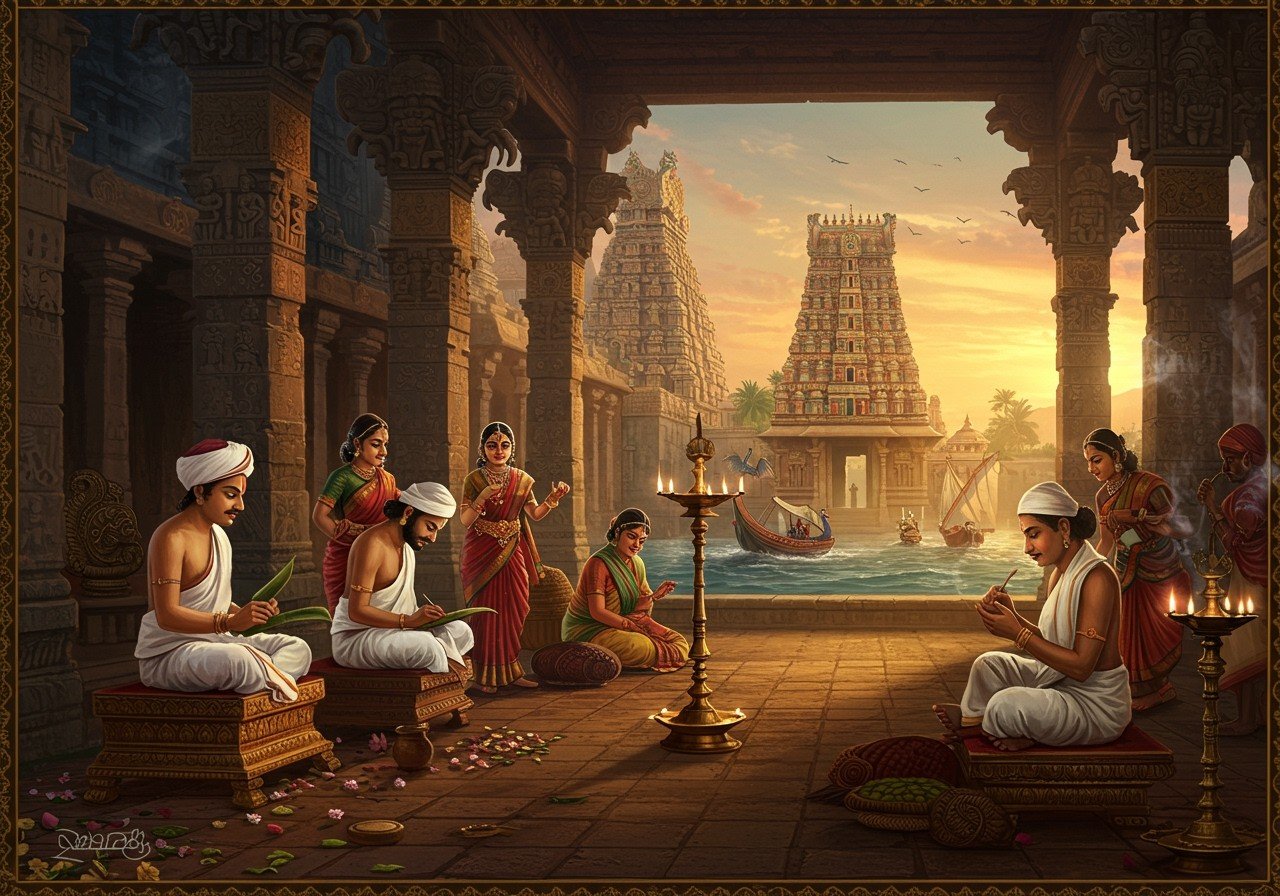
The Sangam Period, a crucial era in ancient Tamil history (5th century BCE – 3rd century CE), marks the flourishing of Tamil language and culture. This period, spanning approximately from 300 BCE to 300 CE, is characterized by rich literary works, socio-political structures, and cultural practices that defined Tamil civilization. Understanding the Sangam Period offers invaluable insights into the heritage and traditions that continue to influence Tamil society today. Archaeological discoveries, such as those at Keeladi, Adichanallur, and Sivagalai, trace Tamil Nadu’s Iron Age back to the 4th millennium BCE, showcasing a long history of human occupation in the Tamilakam region.
Overview of the Sangam Period
The Sangam Period derives its name from the Tamil Sangams, academies or assemblies of poets and scholars. These Sangams played a pivotal role in creating and preserving Tamil literature. The period is divided into three phases: the First, Second, and Third Sangam. The rule of the Chera, Chola, and Pandya kings marked this era, and their patronage fostered the development of Sangam literature. Literary works produced during the Sangam Period include epic poems, ethical literature, and love poetry, offering detailed accounts of the society, economy, and political landscape of ancient Tamil Nadu. The influence of the Sangam Period is evident in the continuation of Tamil traditions and practices.
Literature and Language
The Sangam Period is renowned for its contributions to Tamil literature. Sangam poets composed works in classical Tamil, which remains a cornerstone of Tamil linguistic heritage. Key literary works include the Ettuthokai (Eight Anthologies) and the Pathupattu (Ten Idylls). These texts cover diverse themes such as love, valor, ethics, and governance. The Sangam literature also includes the Thirukkural, a celebrated text on ethics and morality. The language used in these works showcases the richness and complexity of ancient Tamil. This literature, dating back over two thousand years, provides valuable insights into life and society in ancient Tamilakam. Understanding Sangam literature is crucial for appreciating the linguistic evolution and cultural identity of the Tamil people.
Cultural Practices and Traditions
The Sangam Period is marked by distinct cultural practices and traditions that have endured through centuries. Society was organized into various clans and communities, each with specific roles and responsibilities. Rituals, festivals, and ceremonies played a significant role in daily life. The concept of hero stones (Nadukal), erected in honor of fallen warriors, reflects the valor and martial tradition of the Tamil people. Additionally, the Sangam texts provide insights into the agricultural practices, trade, and commerce that sustained the economy. These cultural elements continue to influence contemporary Tamil society.
Social and Political Structures
The Sangam Period saw the emergence of powerful kingdoms and chieftaincies. The Pandya, Chola, and Chera dynasties were prominent during this era. Rulers patronized poets and scholars, leading to the flourishing of literature and arts. The political structure was characterized by a blend of monarchy and clan-based governance. Sangam texts highlight the importance of justice, ethical governance, and diplomacy. The social hierarchy included various classes such as warriors, agriculturists, traders, and artisans. Understanding the socio-political dynamics of the Sangam Period provides insights into the governance and social organization of ancient Tamil Nadu.
Legacy and Influence
The Sangam Period has left an indelible mark on Tamil identity and culture. Literary works continue to be studied and revered for their linguistic excellence and philosophical depth. Cultural practices and traditions that originated during this period are still observed in various forms. The influence of the Sangam Period is evident in contemporary Tamil literature, arts, and rituals. Preservation and promotion of Sangam heritage are crucial for maintaining the cultural continuity of the Tamil people. Understanding the legacy of the Sangam Period helps in appreciating the richness and diversity of Tamil culture.
Poojn.in: Your Gateway to Tamil Cultural Goods
Poojn.in, India’s leading online store for cultural and religious products, offers a wide selection of items relevant to Tamil traditions. Explore our diverse collection and enhance your connection to Tamil culture:
- Traditional Malas: Discover authentic bel malas and tulsi malas crafted with care and reverence, perfect for daily prayers and meditation.
- Sacred Statues and Idols: Find beautifully crafted Shiva lingams and statues of deities revered in Tamil culture, ideal for home altars and personal worship.
- Pooja Items: Browse through our extensive range of puja essentials, including copper vessels, incense, and other items necessary for performing traditional Tamil rituals.
Conclusion
The Sangam Period represents a golden era in Tamil history, characterized by remarkable literary achievements and rich cultural practices. It offers a window into ancient Tamil civilization and its contributions to language, literature, and societal structures. By exploring the Sangam Period, we gain a deeper appreciation for the traditions and values that continue to shape Tamil society. Celebrating the legacy of the Sangam Period also recognizes the importance of preserving this heritage for future generations.


